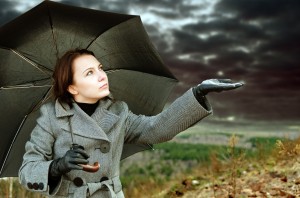Watches, Warnings, Winter Weather, Severe Storms: What does it All Mean?
 Most of us watch the weather reports and try to plan accordingly, but that can be difficult if you do not understand the terms, and the terms can be confusing. In the U.S. The National Weather Service (NWS) issues official warnings and watches. The NWS is a division of the National Oceanic and Atmospheric Administration (NOAA). A warning is more serious than a watch, but a watch can turn into a warning. Above all, anytime you hear an announcement advising people to stay home if at all possible, you should stay at home even if you think you have time to go out and back before the weather hits.
Most of us watch the weather reports and try to plan accordingly, but that can be difficult if you do not understand the terms, and the terms can be confusing. In the U.S. The National Weather Service (NWS) issues official warnings and watches. The NWS is a division of the National Oceanic and Atmospheric Administration (NOAA). A warning is more serious than a watch, but a watch can turn into a warning. Above all, anytime you hear an announcement advising people to stay home if at all possible, you should stay at home even if you think you have time to go out and back before the weather hits.
Basic Winter Weather Terms
Basic winter weather terms and definitions include:
- Winter storm warning. A warning means the winter storm conditions, which can include heavy snow, sleet, freezing rain, or a combination, are happening now or are imminent. The conditions are expected to be a threat to life and property.
- Winter storm advisory. A winter storm is occurring or imminent, but the conditions are expected to be an inconvenience, rather than life-threatening.
- Winter storm watch. The conditions suggest that a winter storm will occur in the next 12 to 36 hours. A winter storm is expected, but not imminent.
- Blizzard warning. High winds, of 35mph or greater, combined with snow which may be heavy falling snow or snow blowing off the ground, creating near-zero visibility and deep drifts, with conditions expected to last at least three hours, and typically creating dangerous wind chills. The conditions are occurring or imminent.
- Blowing snow. Whether falling snow or snow on the ground, snow that is driven by wind to the point that it significantly reduces visibility.
- Wind chill warning. A combination of wind and cold temperatures which, when taken together, can become life threatening within minutes of exposure.
- Wind chill advisory. Wind chill that can be dangerous with prolonged exposure.















